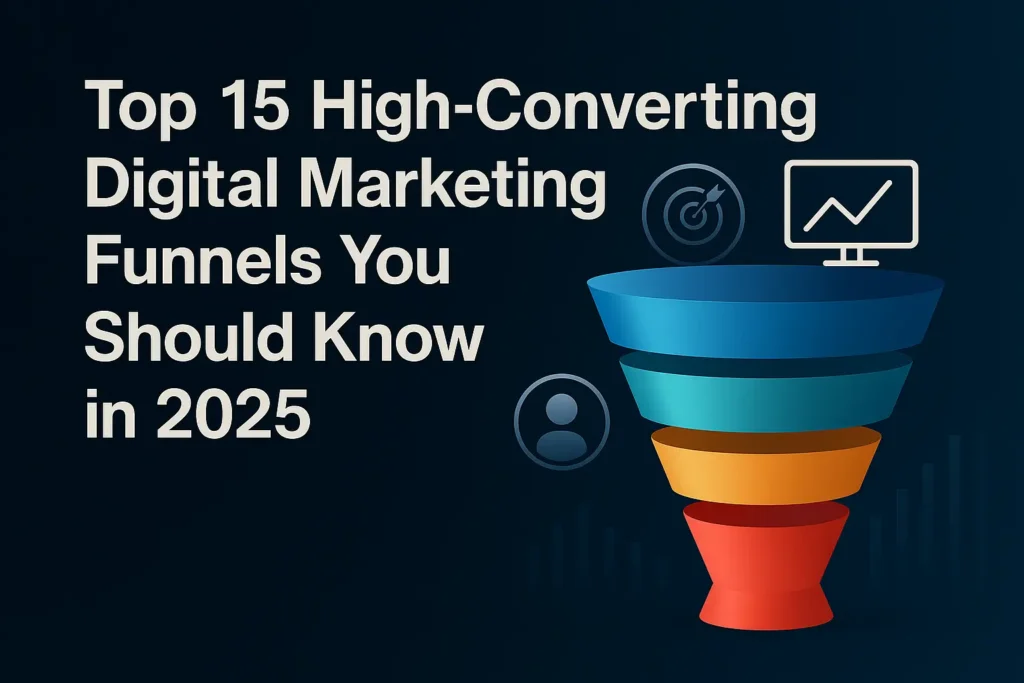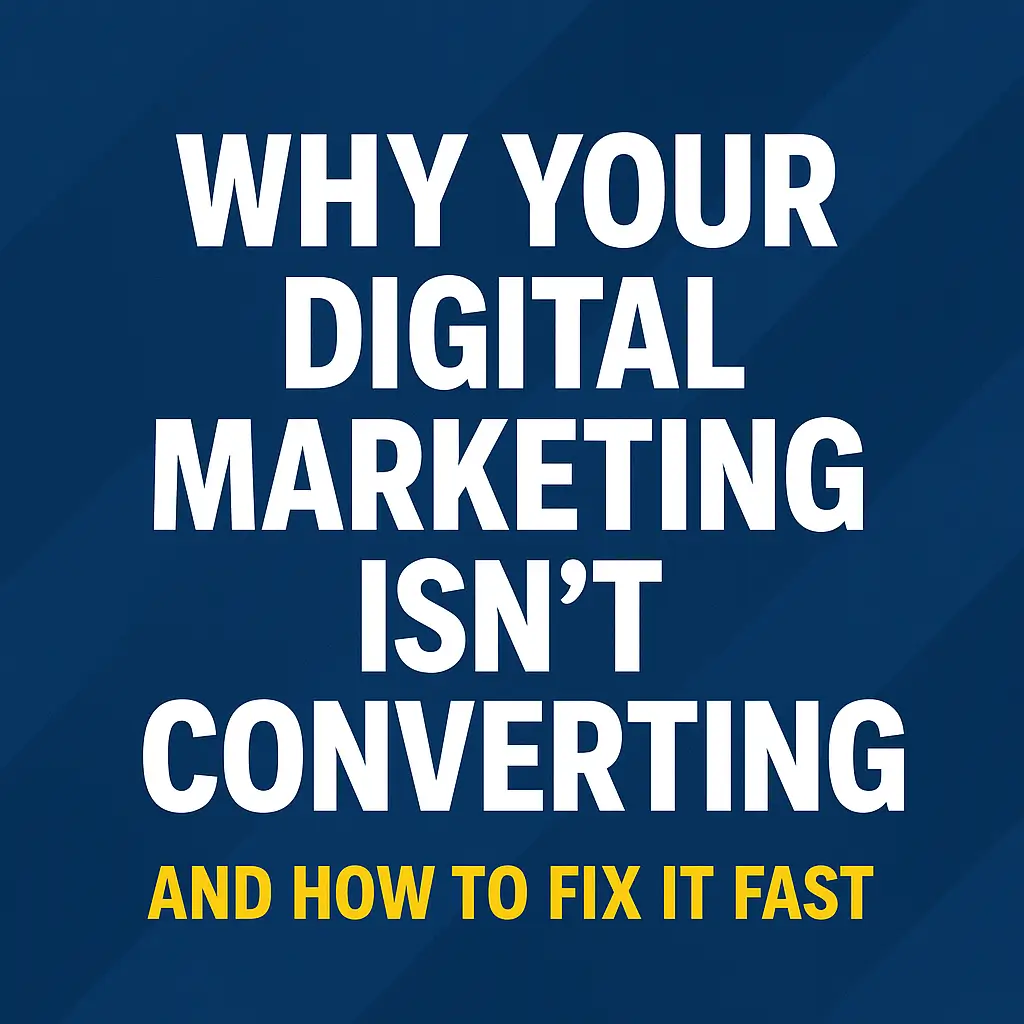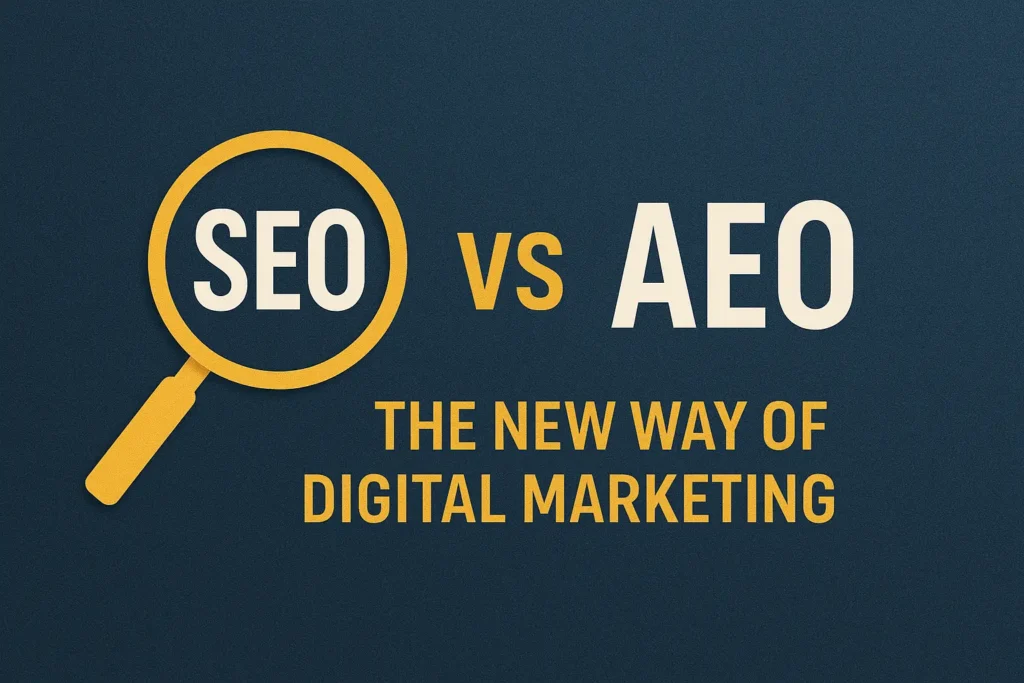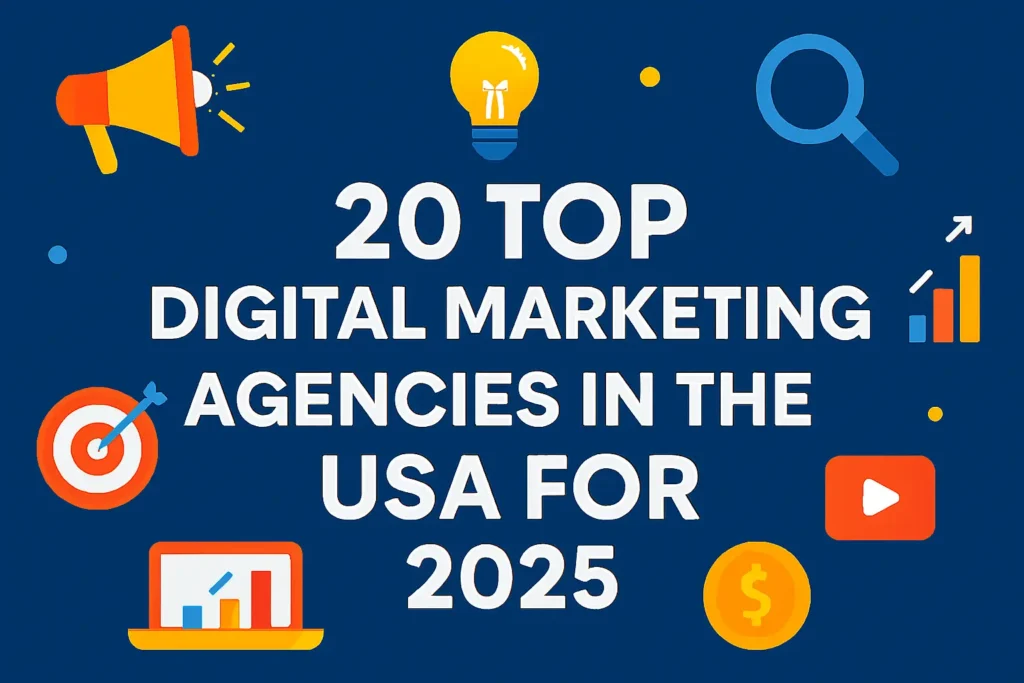A strong digital marketing strategy isn’t optional in 2025 — it’s the foundation for growth, visibility, and relevance in a hyper-connected world.
If you’re starting from scratch, don’t worry. You don’t need to be a marketing guru or have a massive budget. What you do need is a clear, focused plan that helps your brand show up in the right place, at the right time, with the right message.
Whether you’re launching a SaaS product, scaling an eCommerce business, or running a local service company — this guide will walk you through how to build a digital marketing strategy step-by-step, from zero to execution.
Let’s break it down.
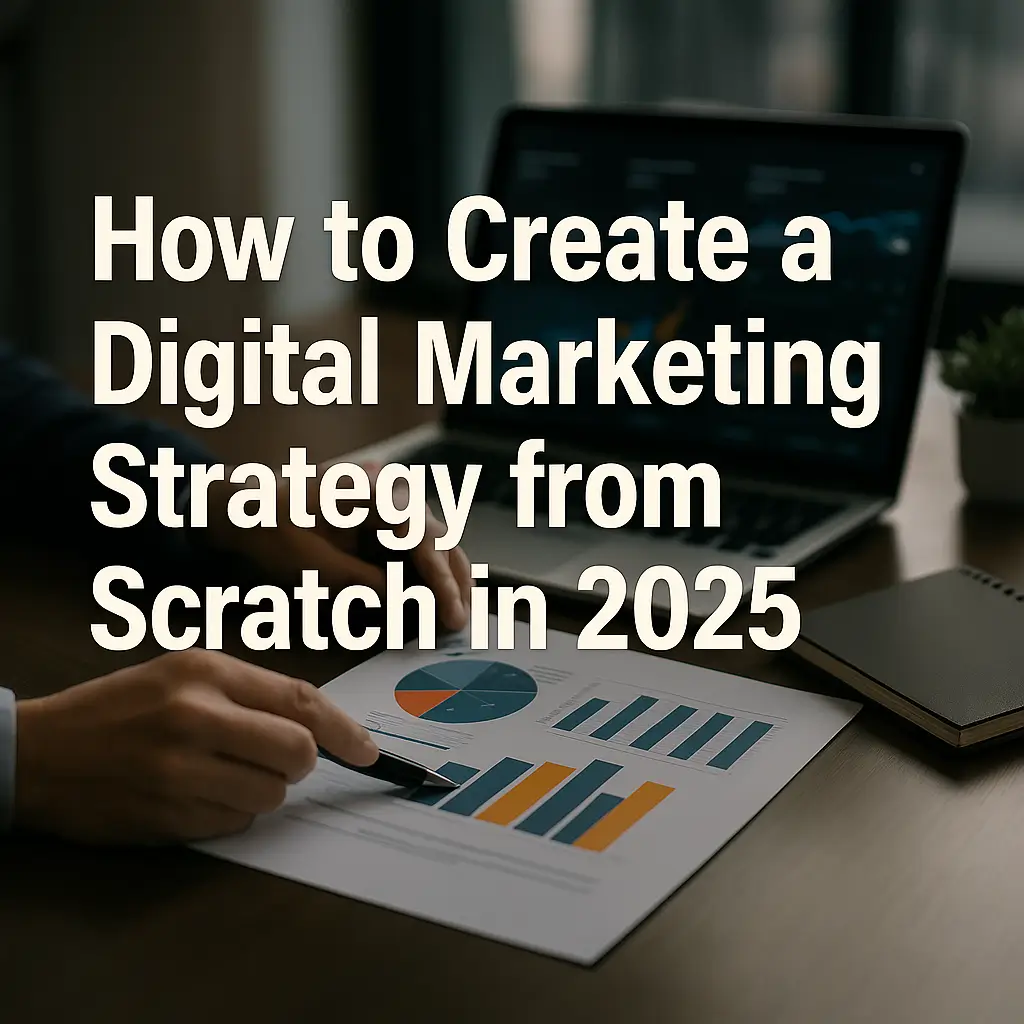
1. Get Clear on Your Business Goals
Every effective digital marketing strategy starts with one question: What exactly are you trying to achieve?
Are you trying to:
- Drive traffic to a new website?
- Build an email list?
- Increase demo signups for your SaaS?
- Improve customer retention?
Your goals will shape everything — from which platforms to use, to how you measure success. For example, if your goal is to grow MQLs (marketing-qualified leads), your strategy will lean more toward content, email, and lead magnets, rather than just brand awareness ads.
Real-world example: A new DTC skincare brand might prioritize TikTok and influencer UGC for awareness in Q1, while focusing on retargeting and email automation for Q2 sales.
2. Understand Your Target Audience (and Speak Their Language)
Too many companies skip this step and go straight into tactics — big mistake.
To build a successful digital marketing strategy, you need to deeply understand:
- Who your audience is
- What they care about
- Where they spend their time
- How they search for answers
- What gets them to click, share, or buy
Start by mapping buyer personas. Include demographics, behaviors, goals, and frustrations. Then validate that persona by looking at real user behavior — search terms, reviews, online communities, even competitor comments.
Tip: Use tools like SparkToro, Reddit, or Google’s “People Also Ask” to uncover actual questions your audience is asking.
3. Choose the Right Marketing Channels
A digital marketing strategy doesn’t mean “do everything everywhere.” It means choosing channels that align with your goals, resources, and audience.
Here’s a quick snapshot of where different strategies shine:
| Channel | Best For |
|---|---|
| SEO + Blogging | Long-term organic traffic |
| Paid Search (PPC) | High-intent, fast conversions |
| LinkedIn Ads | B2B SaaS lead gen |
| Instagram/TikTok | Visual brands, DTC, awareness |
| Email Marketing | Nurturing, lifecycle retention |
| YouTube | Evergreen education, thought leadership |
Each channel plays a role — but your digital marketing strategy should prioritize 1–2 core platforms based on what you can manage well and where your audience actually lives.
4. Craft Messaging That Converts
Now it’s time to figure out what you’re going to say — and how you’re going to say it.
Ask:
- What unique value do you offer?
- What pain are you solving?
- Why should someone choose you over others?
Your messaging should be consistent across all platforms, but tailored to fit each format. What works in a long-form blog post won’t work in a 15-second reel.
Example: A SaaS tool like Notion speaks to productivity nerds using simple, visual, benefit-driven messaging — across email, video, blog, and even onboarding screens.
The core idea? Speak directly to your user’s problem. That’s the heart of a good digital marketing strategy.
5. Create a Content Plan That Supports the Funnel
Your audience won’t convert on the first touch — especially not in 2025. So your strategy needs to map content across the funnel:
- TOFU (Top of Funnel) – Blogs, social posts, YouTube videos (build awareness)
- MOFU (Middle of Funnel) – Case studies, webinars, email sequences (build trust)
- BOFU (Bottom of Funnel) – Demos, pricing pages, customer stories (trigger action)
Your digital marketing strategy should include a content calendar that ensures consistency. It’s not about volume. It’s about value and rhythm.
Real example: Ahrefs uses TOFU blog posts to attract traffic → guides and webinars for MOFU → product tutorials for BOFU.
6. Set Up Tracking & Analytics from Day One
If you can’t measure it, you can’t improve it.
Make sure your digital marketing strategy includes tracking for:
- Website traffic and behavior (Google Analytics 4)
- Form fills, purchases, or demo signups (conversion tracking)
- Email open/click rates (ESP dashboard)
- Ad performance (Google Ads/Facebook Ads Manager)
- Attribution models (especially for multi-channel campaigns)
Use tools like Google Tag Manager, Hotjar, and UTM parameters to get granular with data.
7. Start Small, Test, and Scale What Works
A solid digital marketing strategy in 2025 isn’t about doing everything at once. It’s about rapid testing, learning, and doubling down.
Run small tests:
- 3 ad headlines
- 2 landing page versions
- 1 email subject line vs another
Then scale what works based on data, not assumptions.
Pro tip: Use automation tools like n8n, Zapier, or Make to reduce manual work and increase agility.
8. Stay Current (or Get Left Behind)
Digital marketing evolves quickly. Tactics that worked last year may be dead this year (RIP keyword stuffing and generic stock photos).
A modern digital marketing strategy must evolve with:
- AI content creation and optimization
- Semantic search and AEO (Answer Engine Optimization)
- Short-form video dominance
- Privacy changes and consent-based tracking
- Voice search and conversational UX
Make learning a part of your strategy — follow industry blogs, test new tools, join communities, and subscribe to newsletters that don’t just repeat the same surface-level advice.
Final Thoughts
There’s no single perfect formula — but the truth is, every successful business in 2025 has a digital marketing strategy that’s intentional, measurable, and user-focused.
It’s not about doing everything. It’s about doing the right things consistently, with a clear goal and a message that matters.
So whether you’re just starting out or resetting your approach — this is your roadmap. Build it step by step. Adjust as you go. And remember: strategy beats tactics every time.
Key Takeaways:
- A digital marketing strategy begins with business clarity and audience understanding
- Choose channels and content formats based on where your audience actually is
- Consistent messaging, analytics, and testing are essential
- Stay agile — what works today might not work tomorrow
Subscribe to receive your marketing newsletter.

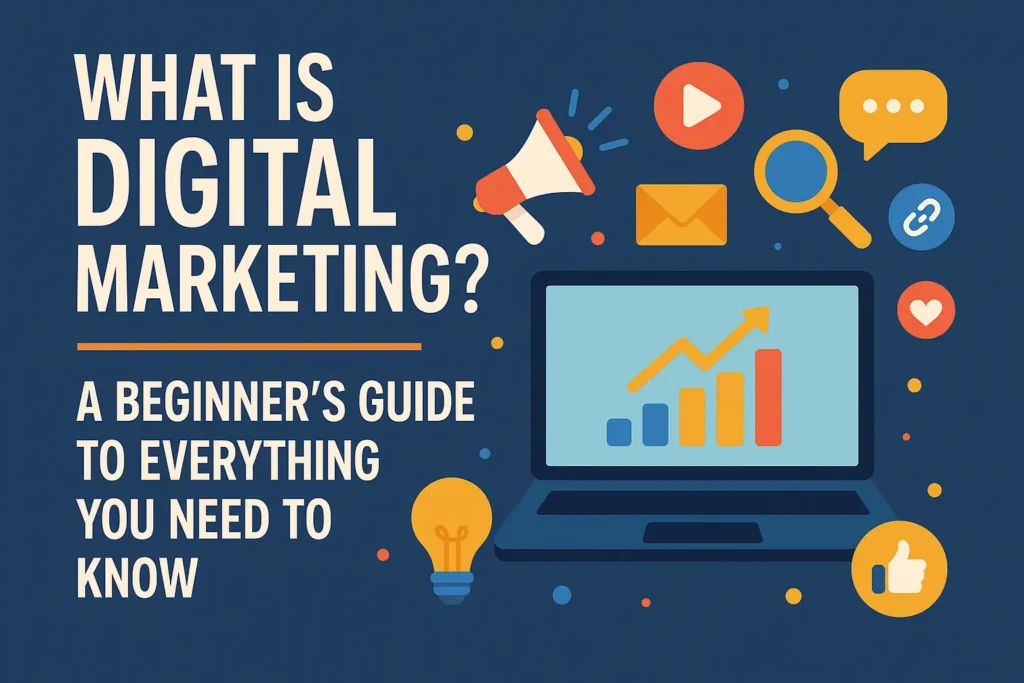
![120+ Must-Know Digital Marketing Terms and Concepts [2025 Glossary for Beginners to Pros]](https://marketingintelix.com/wp-content/uploads/2025/07/120-Must-Know-Digital-Marketing-Terms-and-Concepts-1024x683.webp)
